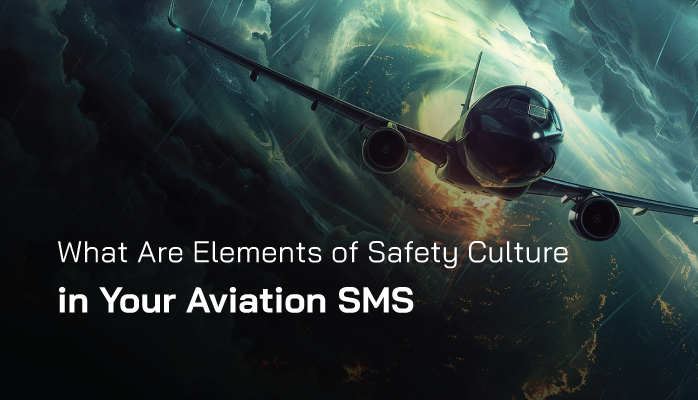Elements of Healthy Safety Cultures in Aviation

Aviation is known as a safe industry; we have statistics showing that it’s safer to fly than it is to drive a car. But what makes it so safe? Should industry really be focused so heavily on safety management systems (SMS) when we enjoy such high levels of safety?
Elevated levels of aviation safety performance certainly didn’t happen by chance but by careful planning and the creation of a culture of safety. There are certain elements that aviation service providers consider to attribute to safe operations. These elements make up a healthy safety culture.
Read below to see which elements your company embraces that assure stakeholders your operations are as safe as possible.
Review Positive Traits Found in Successful Operations
- Checklists Integral to Healthy Safety Culture
Aviation service providers have checklists for everything. Preflight, takeoff, landing, postflight... the more advanced the aircraft, the more checklists there are!
- Routines & Habits
Often in aviation, certain jobs are always done the same way. This helps diminish the tendency to forget important items during preflight or other safety operations. If we get interrupted during a preflight, we’re required to start back at the beginning.
- Teamwork Remains Essential
The crew is expected to work together. Anyone, whether on the ground or in the air, should feel comfortable speaking up if they perceive a problem or the potential for a problem.
Each crew member’s voice is important and great value is placed on crew resource management. Service providers without teamwork are certain to lack a safety culture in the aviation industry.
- Incidents and Accidents Treated Seriously
Shortly after my solo, I accidentally ran the wing of my Cessna 172 into the hangar while taxiing. I cringe every time I think about the moment it struck the building.
This event was classified as an incident and thankfully no one was hurt; however, my flight instructor and the flying club took it seriously.
After the event, I met with an FAA inspector and also with the board of the flying club. Everyone who participated in the aftermath was kind, but it did much to imprint on my mind the seriousness of even a dent in an airplane.
Imagine if a state inspector came out to examine the dent on your car that you ran into the garage, measured your driveway, and asked you to draw a diagram of what happened. Perhaps driving would become safer!
In aviation, we go to great lengths to learn from past faults and failures, to ensure it doesn’t happen again. Lessons learned are shared and reported safety events should not be punitive.
- Complacency Damages Safety Cultures
We’re not allowed to get complacent. Something the above incident taught me is that an accident or incident can happen to anybody. Nobody is immune. We must ALWAYS be on our guard and always think a situation through.
- Planning Must Not Be Under-Rated
When we want to go somewhere in a car, we hop in, plug in our GPS, and go with hardly a thought of the traffic or weather we’ll encounter between us and our destination. Not so in aviation.
We’re required to plan out every step, every radio frequency, and make sure that the weather is going to cooperate. We plan what we will do in the event of an emergency. We have backup plans. We plan everything.
- A Horseplay Culture Is Not a Safe Culture
We treat our jobs seriously. We know that we have our own lives, and the lives of passengers in our hands. It might seem silly to some that we have to shout “Clear!” before we crank the propeller, even when we don’t see another living soul on the ramp. We do it because we’re serious about our job.
The sterile cockpit rule and passenger briefing are other examples of this.
Not All Safety Cultures Are Identical
There will be differences in the subtle details of each company's aviation safety culture. One's viewpoint may vary depending on each person’s role in the company, but the basic principles will remain the same. These things together help to create a culture of safety.
Related Aviation Safety Culture Articles
- How to Build Safety Culture in Aviation SMS
- 5 Characteristics of Effective Aviation Safety Cultures - With Free Survey
- 3 Reasons Why Aviation Safety Culture Leads Directly to Safety Performance
Healthy safety cultures have healthy safety reporting cultures. Offering employees simple, fast, user-friendly ways to report hazards is very important. These three short videos offer an insight into some very useful tools for a modern Hazard Reporting Solution.
Non-punitive reporting policies form the backbone of your healthy reporting culture. When was the last time you reviewed your non-punitive reporting policy? Here are some useful templates.
Last updated in August 2025.






